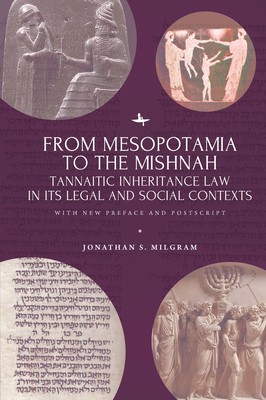
- We will send in 10–14 business days.
- Author: Jonathan S Milgram
- Publisher: Academic Studies Press
- Year: 2019
- Pages: 242
- ISBN-10: 1644690276
- ISBN-13: 9781644690277
- Format: 15.6 x 23.4 x 1.3 cm, softcover
- Language: English
- SAVE -10% with code: EXTRA
Reviews
Description
Employing text critical methods, Jonathan S. Milgram argues that, in the absence of the hermeneutic underpinnings for tannaitic innovations, the inheritance laws of the tannaim were not the result of the rabbinic penchant for inventive interpretation of Scripture. Turning to biblical, ancient near eastern, Second Temple, Greek, Elephantine, Judean desert, and Roman sources, the author finds conceptual and terminological parallels adopted and adapted by the tannaim and argues for a close affinity between some Roman institutions and their tannaitic counterparts. Since the tannaitic traditions reflect the social and economic contexts of the tannaitic period--the nuclear family on privatized landholdings in urban centers--the author also considers the degree to which the laws may have emerged out of these contexts.
EXTRA 10 % discount with code: EXTRA
The promotion ends in 17d.21:44:39
The discount code is valid when purchasing from 10 €. Discounts do not stack.
- Author: Jonathan S Milgram
- Publisher: Academic Studies Press
- Year: 2019
- Pages: 242
- ISBN-10: 1644690276
- ISBN-13: 9781644690277
- Format: 15.6 x 23.4 x 1.3 cm, softcover
- Language: English English
Employing text critical methods, Jonathan S. Milgram argues that, in the absence of the hermeneutic underpinnings for tannaitic innovations, the inheritance laws of the tannaim were not the result of the rabbinic penchant for inventive interpretation of Scripture. Turning to biblical, ancient near eastern, Second Temple, Greek, Elephantine, Judean desert, and Roman sources, the author finds conceptual and terminological parallels adopted and adapted by the tannaim and argues for a close affinity between some Roman institutions and their tannaitic counterparts. Since the tannaitic traditions reflect the social and economic contexts of the tannaitic period--the nuclear family on privatized landholdings in urban centers--the author also considers the degree to which the laws may have emerged out of these contexts.


Reviews